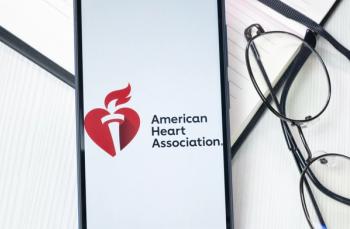
Best remedies for fall seasonal respiratory allergies
Just because the weather cools down in the Fall months, doesn't mean that respiratory allergies are done. Here's a look at some of the best respiratory allergy remedies.
As summer fades to fall, people tend to get excited for things like back-to-school for the children, cooler temperatures, and pumpkin spice everything. Ragweed season, on the other hand, is looked at with excitement by no one.
Especially as a global respiratory pandemic marches on, fall allergies can be difficult to manage. Is that cough or sneeze actually COVID-19? Or the flu?
Although diagnosing seasonal respiratory allergies may be pretty straightforward, managing them can be tricky, because there are few one-size-fits all treatments.
The key to managing any seasonal respiratory allergy—no matter what season it is—is to know the triggers and keep an eye on the seasons, according to allergy experts. Detecting allergens is best done with a skin-prick test, but there are a number of
Other top fall allergens include:1
- Burning bush
- Cocklebur
- Lamb’s-quarters
- Pigweed
- Sagebrush and mugwort
- Tumbleweed and Russian thistle
Below are some other suggestions to offer patients and caregivers for managing allergens in the fall—or any season.1
- Know your allergens and when they peak in that area you live.
- Keep windows closed when pollen counts in your area are high.
- Run an air conditioner rather than using fans that can spread pollen.
- Change the filters in your air conditioner and furnace regularly.
- Wash hair before going to sleep to remove pollen.
- Take a shower and wash clothes if you’ve been outside when pollen counts are high.
- Wear a face mask and take allergy medications before doing outside work or play when pollen counts are high.
- Wear glasses or sunglasses to keep pollen out of your eyes.
- Limit exposure to animals or wash your hands after touching them.
- Avoid rubbing your eyes.
There’s also not a lot of recognition of the role fragrances can play in respiratory allergies, says Stanley M. Fineman, MD, a pediatric immunologist at Atlanta Allergy and Asthma and a spokesperson for the American College of Allergy, Asthma, and Immunology.
“There’s been a lot more people using fragrance products like candles and essential oils, and so many children have increased nasal symptoms that come from volatile organic compounds in candles and essential oils,” Fineman says. Household chemicals and cleaners shouldn’t be overlooked, either, he adds. “I would also ask the parent if the child is exposed to these in the home or do you use those.”
This may be especially true as parents may be sanitizing more due to COVID-19. Speaking of COVID-19, experts warn that masking during COVID-19 may also contribute to a bit of desensitization when it comes to respiratory allergies, resulting in a higher-than-normal number of severe allergy complaints when the masks come off.
When prevention efforts aren’t enough, Grayson says to be careful when it comes to what allergy medications patients and caregivers are choosing. Immunotherapy works well, as do intranasal corticosteroids.2 When it comes to antihistamines, Grayson says newer generations of antihistamines are preferred over older formulations like diphenhydramine. Diphenhydramine and similar antihistamines cross the blood-brain barriers and can have a sedating effect on the central nervous system.
“There’s no reason to give a drug like (diphenhydramine) that has central nervous system effects,” Grayson says. If inhaled corticosteroids and second-generation oral antihistamines aren’t helping, he says pediatricians shouldn’t hesitate to refer patients and families to an allergy specialist, where treatment can be tailored more specifically and effectively for particular allergens.
References
1. American College of Allergy, Asthma and Immunology. Common seasonal allergy triggers. Updated December 28, 2017. Accessed August 17, 2021.
2. American College of Allergy, Asthma and Immunology. Allergic rhinitis. Updated May 17, 2020. Accessed August 17, 2021.
Newsletter
Access practical, evidence-based guidance to support better care for our youngest patients. Join our email list for the latest clinical updates.








